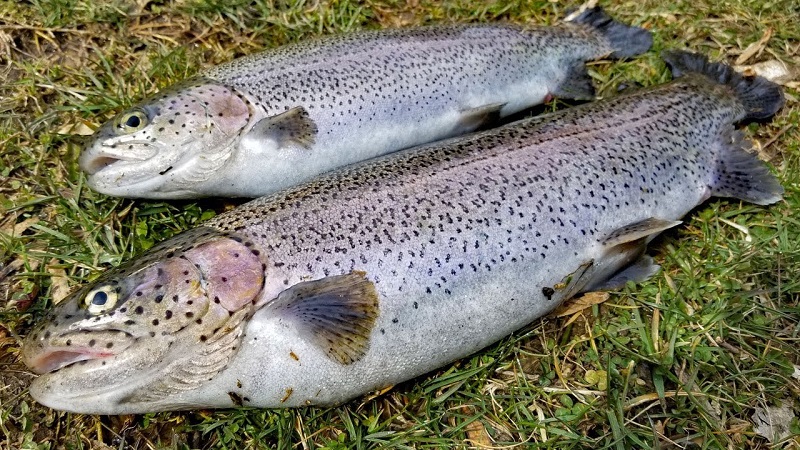How to Catch Trout: 5 Tips and Tricks

With trout fishing season in full swing, anglers everywhere are eager to land their first (or biggest) trout of the year.
Trout can be notoriously tricky to catch, but with a bit of know-how and some practice, you can be landing these feisty fish with ease.
If you want to understand how to catch trout, here are five tips that will help your fishing.
Know the Water
One of the crucial things to do before going out on a trout stream is to study water samples and habitat conditions.
You should examine maps, check with local fly shops, and ask river guides for their insight. When scouting a new area, choose a consistent element from the map or satellite image that you can use as waypoints to target specific areas.
Match the Hatch
Matching the hatch is one of the essential aspects of fly fishing, and it’s essential when targeting trout.
To match the hatch, you need to know what insects are in the area and their size and color. The process requires a lot of research and study, but once you know what insects are shared in an area and how big they get, the hatch matching becomes very simple.
There are a variety of resources to help anglers match the hatch, including local fly shops, online resources, and even apps.
Use a Good Quality Equipment
According to reports, the global sports fishing equipment market will reach$18.3 billion by 2027.
Freshwater trout is one of the most challenging species to target with fly tackle. They are fast, innovative, and have lots of experience evading anglers.
While they are not quite as challenging to catch as bonefish or permit, they can be every bit as frustrating when you’re using inferior equipment.
A good quality rod, reel, and line are essential when fishing for trout. You should make sure your tackle is in good condition and can handle the demands of this challenging fish.
When targeting trout, it’s essential to use a good rod and reel to handle light lines and smaller flies. A 4- or 5-weight rod is ideal for most trout fishing situations, and you’ll want to use a reel that can hold 150 yards of a 4-pound test tippet.
Strike Quickly, but Don’t Set the Hook Too Early
Many anglers mistake setting the hook too early when fishing for trout. You should let your fly land on the water completely before even thinking about setting the hook.
If you set the hook too early, you’ll most likely miss the fish or pull the fly out of its mouth.
Once you’ve determined that the fish has taken your fly, it’s important to react quickly. You should strike firmly but don’t jerk the fly out of the water. It will often cause the trout to drop the fly.
Use the Right Fly
If you want to learn how to catch trout, choosing the right fly is essential. You need to match the fly’s size, color, and profile to the insects that are hatching in the area.
Various resources are available to help you match the hatch, including local fly shops, online resources, and even apps.
You should choose flies that are well made and durable. You should not spend a fortune on fly tying materials, but you should avoid the bargain bin.
If your first attempt fails, try another fly pattern until you find one that works.
Trout can be very challenging to catch because they are fast, intelligent, and strong; however, with a bit of know-how and some practice, you can be landing these feisty fish with ease.